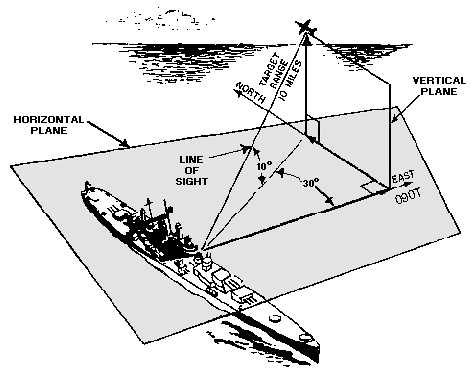3-4
Figure 3-1.—Radar target position.
Bearing and elevation angles are determined by measuring the angular position of the radar antenna
(the transmitted beam) when it is pointing directly at the target. Range is more difficult to determine
because it cannot be directly measured. The radar system is designed to measure range as a function of
time. Since the speed of electromagnetic energy is the same as the speed of light, range is determined by
measuring the time required for a pulse of energy to reach the target and return to the radar. Because the
speed of the pulse is known, the two-way distance can be determined by multiplying the time by the
speed of travel. The total must be divided by two to obtain the one-way range because the time value used
initially is the time required for the pulse to travel to the target and return.
The discussion of microwave antennas in this chapter requires only the most basic understanding of
radar concepts! Radar fundamentals will be discussed in more detail in a later NEETS module.
Q-1. Microwave antennas and low-frequency antennas are similar in what ways?
Q-2. What term is used to express the efficiency of an antenna?
Q-3. What term is used to express the measurement of the degree of mismatch between a line and its
load?
Q-4. What type of antenna radiates in and receives energy from all directions at once?
Q-5. What is the term that is used to describe narrowness in the radiated beam of an antenna?
Q-6. What characteristic allows the same antenna to both transmit and receive?

